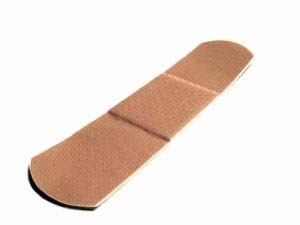How would you like to go through your entire life where your body is unable to control bleeding whether it is internal or external? That is what my six year old cousin, Parker, as well as many other people in the world suffers from every minute of the day for all of their lives. But what is this condition called? Where did it come from? Who can get it? What can you do to prevent it? Is it genetic? Lots of questions and here are the straightforward answers.
What is this condition called?
This hereditary genetic illness is called hemophilia. This illness impairs the body’s ability to control bleeding. Normally plasma is created to compromise blood clotting when a blood vessel is injured a scab will form, in the case of a hemophiliac, the scab will not form and the vessel can and will continue to bleed for a long period of time. The bleeding can be external by a scrape, cut or abrasion when the skin is broken or it can be internal bleeding.
When and where it was first discovered?
During the 12th century an Arab physician wrote of a family of males that died of bleeding after minor injuries. Around 1828 the term “hemophilia” appeared as the description of this condition by discovery of a student at the University of Zurich.
Is it genetic? If so, how can I get it?
Yes, it is genetic. The disease is transmitted through females but almost invariably affects male offspring only. A male born to a carrier mother has a 50% chance of having the disease. A hemophiliac cannot pass the disease to his sons, but all his daughters will be carriers. This is because the female possess two X chromosomes, and males have one X chromosome and one Y chromosome. This disease is a recessive disease, meaning that every person has two copies of every gene, one from mother and one from father. If a genetic trait is recessive, a person needs to inherit two copies of the gene for the trait to be expressed. Thus, both parents have to be carriers of a recessive trait in order for a child to express that trait. If both parents are carriers, there is a 25% chance with each child to show the recessive trait. In most cases, the male is affected; however for the female to inherit it and not be the carrier, she must receive two x chromosomes, one from her mother and one from her father who must be a hemophiliac himself.
If a female is affected by hemophilia, how dangerous is it for her to have her period?
Due to the bleeding tendency during the menstrual cycle, females may experience menorrhagia, which is an abnormally heavy and or prolonged menstrual periods due to the abnormal blood clotting. Because of the iron and blood loss there can be complications such as; tiredness, weakness, tingling and numbness in fingers and toes, headaches, depression, becoming cold more easily, and poor concentration. If your body does not have enough iron reserved to replenish your body it can lead to anemia.
What are the chances of a female giving birth to a hemophiliac child?
While pregnant it is recommended that the woman receive prenatal testing to see if she is a carrier of the disease. About 0.006% of the United States suffers from hemophilia. If a female gives birth to a hemophiliac child, she is the carrier of the disease. A hemophiliac cannot pass the disease to his sons, but all his daughters will be carriers.
What are the signs of hemophilia?
The major signs and symptoms are bleeding, bruising, swelling from bleeding in the joints, soft tissues, and muscles, blood in the urine, blood in the stool, or nosebleeds for no obvious reasons. Internal bleeding is common in severe hemophiliac and if not treated promptly can lead to damaged muscles and joints. The severity of the condition is taken into consideration to the extent of the bleeding. Males with severe hemophilia may bleed heavily after circumcision; moderate hemophiliacs may not have any signs or symptoms at birth.
How is Hemophilia diagnosed?
Blood tests are used to determine how long it takes for your blood to clot, whether your blood has low levels of any of the clotting factors, and whether one of the factors is completely missing from your blood.
There are three forms or levels, if you will, of hemophilia:
Hemophilia A which is the most common hemophilia that affects 1 in 10,000 males.
Hemophilia B which is the second most common from of hemophilia and is sometimes called the Christmas disease. This form of hemophilia occurs primarily in males and occurs in 1 out of 32,000 men. This from results in a deficiency of clotting factor IX. Factor IX is a protein substance in blood plasma located in the X chromosome that participates in and is essential for the blood clotting process.
Hemophilia C is a mild form of hemophilia affecting both sexes that predominantly occurs in Jews of Ashkenazi descent. It is due to deficiency of coagulation factor XI. Factor XI is produced by the liver and is a factor in the clotting of the blood. It can be distinguished from hemophilia A and B as it does not lead to bleeding into the joints. It is believed that this form affects 8% of that population.
How can hemophilia be cured?
There is no cure for hemophilia but treatments are available. A medicine called Desmopressin or DDAVP is sometimes given to raise the body’s levels of factor. Birth control pills control heavy periods in women with some bleeding disorders. They work by increasing the amount of clotting factors in the blood. Antifibrinolytic drugs are medicines used to stop blood clots from breaking down. They can be used before dental work, to stop nosebleeds, and for mild intestinal bleeding.
If you have hemophilia, you can take steps to stay healthy and prevent illness and bleeding problems. If your child has hemophilia, you can do many things to help him or her live a healthy life. There are over 140 federally funded hemophilia treatment centers offers excellent treatment, education, and support services to those with hemophilia and their families.
Many hemophilia treatment centers are located at major university medical and research centers. Research has found that receiving care at hemophilia treatment centers leads to fewer complications and hospitalizations, as well as a better quality of life for those with hemophilia.
Hemophilia in childhood is a challenge because as your child grows they become more active and sometimes reckless. Make sure that your child has all his or her immunizations, maintains a healthy diet, and a safe environment. Always educate your child about their condition so they can understand it and also help themselves with treatment and prevention of becoming hurt. Keeping a diary or a record of treatments will help you and your child as they grow to recognize and educate in certain situations. There are a lot of activities that are not safe for hemophiliac such as football, hockey, and wrestling, but there are a lot of safe activities such as golf, swimming, walking, and many more.
Treating hemophilia can be very costly and a lot of times health insurance companies will only pay on a case by case basis. There are many foundations out there for hemophiliac that assist with everything from treatments to activities.
Hemophilia is an illness that should not be taken lightly and should be treated efficiently and for the rest of your life. Be careful, be knowledgeable, and please be safe.






